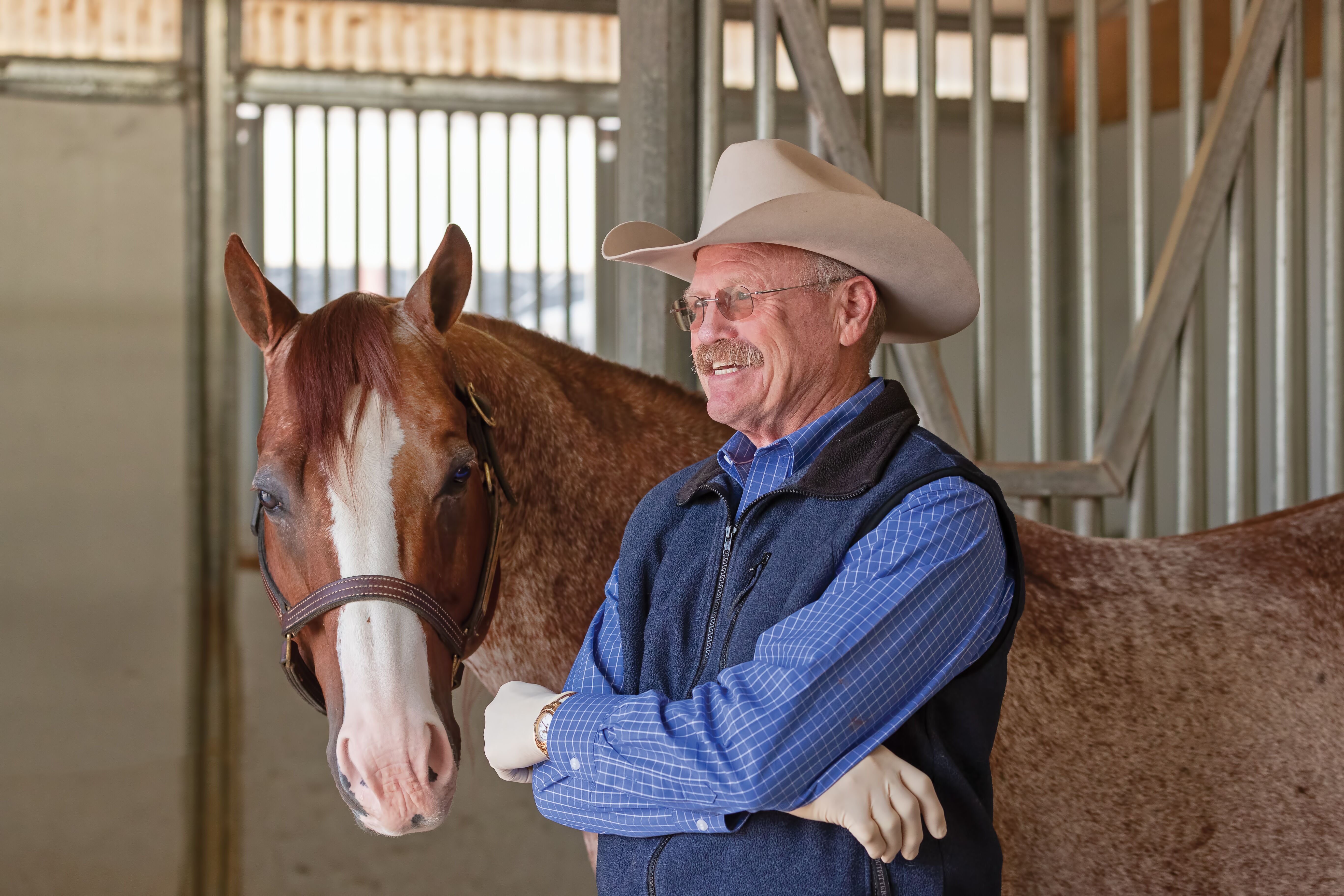Dr. Lenz was the recipient of the 2019 Equine Industry Vision Award at the American Horse Publications Equine Media Conference in May, presented by Zoetis. This award recognizes an individual’s innovation and commitment to making a positive impact on the equine industry. Dr. Lenz is a life-long advocate for animal welfare and humane treatment of horses.
[READ: Common Horse Welfare Questions]

Q: What made you want to practice veterinary care in the equine industry?
A: I grew up on a cattle farm with plenty of horses. We were very careful with the cattle because they were our source of income, but the horses were recreational, so we didn’t provide them with the same level of care. After I graduated veterinary school at the University of Missouri in 1979, I moved to California to work at a mixed animal practice, where I worked largely with horses. The horses there were show or breeding animals, so they were well taken care of. I found caring for horses to be more fun—I enjoy the lameness and reproduction work, especially. With horses, I feel I can really use my education. Most importantly, I enjoy the animals and the people who own them.
Q: Describe your involvements in equine organizations.
A: I’m a past president of the American Association of Equine Practitioners, where I chaired the AAEP Welfare Committee. I’ve also chaired or served on welfare committees for the United Horse Coalition, American Quarter Horse Association, Missouri Veterinary Medical Association, Professional Rodeo Cowboys Association, and Wild Horse and Burro Program. As a veterinarian I’m most passionate about the AAEP. I’ve been involved in every level of leadership, and the organization improves the health and welfare of all horses.
Q: What is the United Horse Coalition?
A: In 2002, the American public was actively advocating to shut down horse slaughter. In 2003, when I was president of the American Association of Equine Practitioners, we convened a summit to talk about the uproar. The AAEP met with the American Horse Council at AHC’s annual meeting in 2005 to create the United Horse Coalition, formerly known as the Unwanted Horse Coalition. From 2005 to 2018, the goal of the Unwanted Horse Coalition was to educate the public about unwanted horses. We then changed the name to the United Horse Coalition because we felt we’d accomplished the goal of raising awareness. The current focus of the UHC is to continue education and outreach to coordinate the efforts of all horse organizations. Today everyone knows what unwanted means, and virtually every horse organization has a program in place to rehome and retrain unwanted horses.
[READ ABOUT: Equine Network’s A Home For Every Horse]
Q: What is the Wild Horse and Burro Program?
A: There are 88,000 wild horses and burros in the 10 Western states, and the land can only support about 20,000. There are about 16,000 to 18,000 foals born each year, doubling herd sizes about every four years. Of those 88,000 horses, there are only about 4,000 adoptions each year, which means about 5,000 have to go into long-term holding facilities. The Wild Horse and Burro Program has tried to use contraceptive vaccines, but these are required every year or every other year, and the horses are hard to gather. We can’t come up with a contraceptive to last a horse’s lifetime, and the public opposes spaying mares. The public loves these iconic horses because they embody the West. Still, the program is now at a critical point because the horses are unable to survive on the land. Something dramatic must be done.
To learn more about the United Horse Coalition or the Wild Horse and Burro Program visit the American Association of Equine Practitioners.






